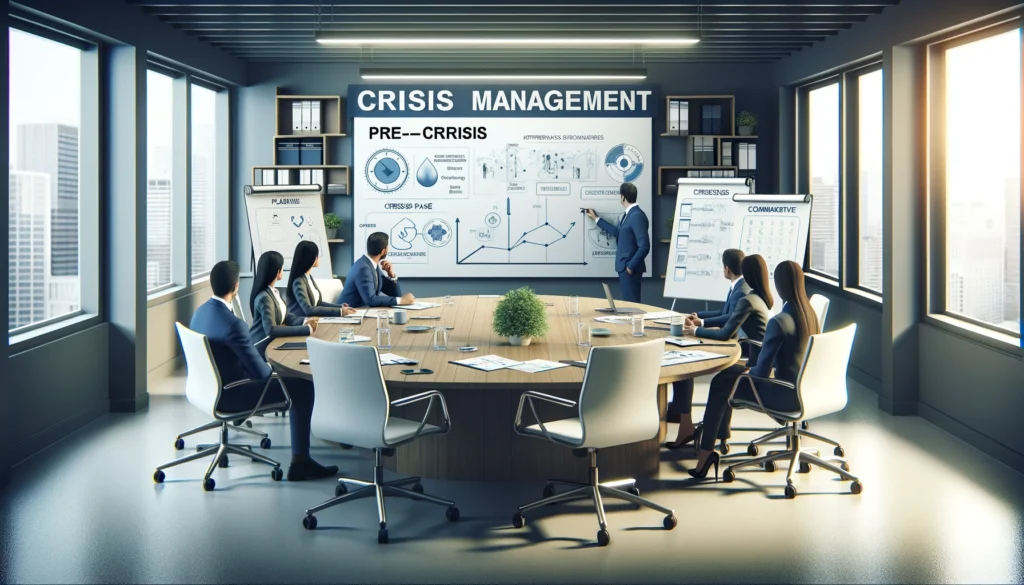In both life and business, one’s reputation is crucial. Nevertheless, reputation is extremely brittle, and all it takes is one misstep to destroy your company’s good name. This is particularly true in the digital sphere, where extreme openness and high client standards are the norm. Neglecting influential digital voices from the public is no longer an option. In the era of social media, businesses need to learn how to listen intently to social media reviews and respond to reviews in a way that meets customer and brand expectations.
Any business of any size must have a social media crisis management plan, or better yet, a crisis prevention plan, in place for those inevitable moments when things go wrong in the online world. And it really comes down to “when” as opposed to “if.”
Let’s examine some strategies for averting social media mishaps, stopping them from getting worse, and what to do if things go wrong.

What is Crisis Management?
The process of anticipating, responding to, and recovering from unforeseen events that could endanger an organization, its stakeholders, or the general public is known as crisis management. Natural catastrophes, financial crises, data breaches, IT security, product recalls, negative reviews and testimonials and any other occurrence that jeopardizes the organization’s operations, reputation, or financial stability are examples of common crisis scenarios.
Understanding the Crisis Management Process
Crisis management professionals must carefully navigate the numerous potential for unanticipated occurrences, crises, reputational threats, and other emergencies if business continuity planning is to be successful. Using a crisis management plan template can help businesses that are just beginning to develop their crisis strategy by outlining the three stages of a crisis and providing the essential risk analysis to help fend off potential threats.

Pre-Crisis Phase
Effective crisis management begins with using risk management to detect any threats that could have an impact on the firm. This can involve creating scenario plans, assessing risks, and keeping an eye out for possible problems and dangers. Organizations can develop adaptable business continuity plans and strategies that can be swiftly and successfully deployed during a crisis by anticipating possible crises and taking proactive measures to mitigate them.
Organizations can create step-by-step crisis response strategies after possible crises have been recognized. Creating crisis management teams, outlining roles and duties, and creating communication plans are a few examples of this. To make sure that staff members are equipped to handle a crisis, it is crucial for businesses to hold training sessions and emergency drills.
Response Phase
Organizations need to be flexible and nimble in their decision-making during the crisis management process reaction phase. This entails keeping a careful eye on the circumstances, getting precise information, and making defensible decisions in light of the information at hand. In order to keep all stakeholders informed and up to speed on the status of the situation, it is imperative that the organization have clear channels of communication throughout this critical moment.
During this stage, coordination with outside partners, including the media, government organizations, and emergency services, is also crucial. It is recommended that organizations cultivate ties with these partners ahead of time to enable more seamless collaboration in times of disaster. Crisis handlers and these partners can work together to effectively coordinate the allocation of resources and the implementation of all required measures to lessen the impact of the crisis.
Post-Crisis Phase
After addressing the immediate consequences of a crisis, organizations need to concentrate on recovery initiatives and minimizing adverse reactions from stakeholders. This entails evaluating any losses or damage sustained during the crisis and putting plans in place to get things back to normal. During this phase, companies must restore trust and ensure stakeholders that necessary steps have been taken to avoid similar crises in the future. As such, communication is essential.
After a crisis, organizations should carry out in-depth assessments to pinpoint areas that still require development and lessons gained. This input can assist strengthen preparedness for similar occurrences in the future and guide future crisis management strategies. To handle potential new risks or difficulties, it is critical for businesses to regularly assess and update their business crisis management plans.

9 Tips To Handle Negative Publicity
- Proactive Monitoring and Listening: Keeping an eye on and listening to online reviews about your brand is the first step in crisis management. To keep track of brand mentions, customer reviews, and comments, use social media monitoring tools like Google Alerts. Being quick to recognize possible problems enables you to take action before they become serious problems.
- Rapid Response And Transparency: In the digital age, speed is essential for crisis management. Reactions to bad press should be made quickly and openly. Admit the problem, accept responsibility for your mistakes, and explain your strategy for fixing the situation. Being open and honest with your audience builds trust and shows that you are dedicated to solving their issues.
- Empathetic Communication: It’s critical to communicate with compassion and empathy when there’s a crisis. Recognize the feelings of your target audience and adjust your messaging appropriately. Be empathetic to people impacted by the situation and let your clients know that you are paying attention to their worries. Building a relationship with your audience through empathetic communication humanizes your brand.
- Employ Owned Media: Take advantage of your channels of owned media, including your blog, email newsletter, and website, to steer the narrative in times of crisis. Post announcements and updates on the matter in a timely manner and give correct information to dispel rumors and false information. You can keep control over your brand messaging and engage directly with your audience when you use owned media.
- Interact with Influencers and Brand Advocates: Using influencers’ and brand advocates’ assistance during a crisis can help spread good messages and lessen the impact of bad press. Speak with prominent figures in your field who have a sizable fan base and a solid reputation to entice them to write glowing reviews and testimonials and tales about your company. In addition, brand evangelists can be quite helpful in refuting false information and protecting your brand.
- Monitor and Modify: Keep a close eye on the success of your crisis management initiatives and be ready to modify your plans of action as needed. Pay attention to what your audience has to say and modify your messaging and strategies as necessary. You may effectively handle the problem and lessen its long-term effects on your brand by continuing to be flexible and responsive.
- Employ Skilled Community Managers: Some companies still handle social media communities as an afterthought and delegate the task of occasionally posting a tweet to their interns. Hiring experts is advised because your brand’s reputation and image are greatly influenced by your social media presence! Experience, in-depth brand knowledge, a grasp of the voice and personality of your company, and—above all—a genuine passion for your clientele are all essential qualities in a community manager. Don’t undervalue the importance of the community manager role in your company; it acts as a voice for your customers. A seasoned community manager will also know when to move the conversation offline, how to handle irate consumers, and how to handle efforts at social media takeover.
- You Can Never Win Over Everyone: As a brand and a leader, you may occasionally need to accept misinterpretation. If you have a strong belief in anything you are doing or in a particular viewpoint, but other people don’t agree with you, you will need to be prepared to stick with your choice. Under such circumstances, you will need to be ready to answer negative reviews and criticism with composure, as well as to be open and honest about the reasons behind your strong feelings. This is where your social media followings come into play even more; here is where your supporters and followers—those who agree with you and share your vision—can weigh in and lend their support to your message or cause. Organic brand love and advocacy are strong partners in protecting a brand’s reputation and disseminating its message in situations like these.
- Learn and Grow: Following the crisis resolution, carry out a thorough post-mortem investigation to pinpoint lessons gained and potential areas for development. Analyze the crisis management process to see what worked effectively and what may have been done differently. Make use of this knowledge to strengthen your brand’s crisis-resilience and improve your crisis management tactics.

Conclusion
In conclusion, crisis management is an indispensable facet of digital marketing strategy, and adept handling of negative publicity can be the difference between a minor setback and a significant reputation crisis. By implementing proactive monitoring, swift review response, empathetic communication, and continuous evaluation, businesses can successfully navigate crises in the digital age and emerge stronger on the other side. Remember, in the face of adversity, transparency, empathy, and authenticity are your most potent allies.







